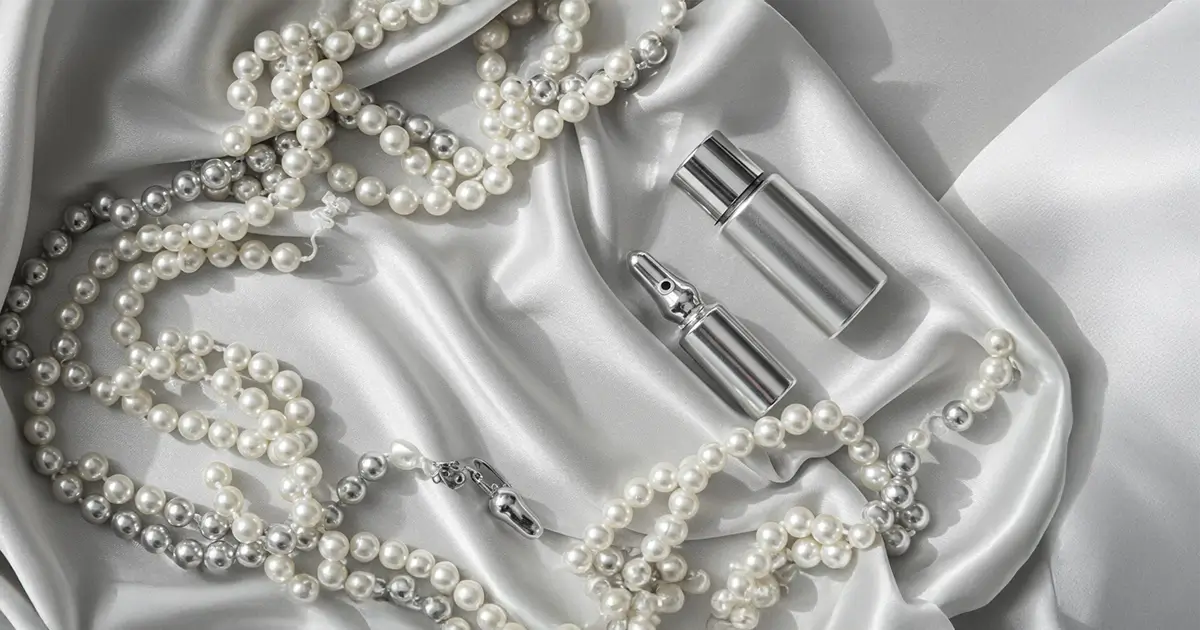Ever feel like skincare buzzwords multiply faster than laundry on a rainy Sunday? Today I break down peptides, the mini-messengers that persuade your skin to stitch fresh collagen and hold onto its springiness, all in one chatty 9-minute read.
Meet the Micro-Messengers: What Peptides Actually Are
Peptides are short chains of amino acids, essentially tiny slices of proteins, that occur naturally in your body, including skin, hair, and even the saliva you forget about until your dentist hands you that suction hose. Because they are so small, peptides can slip between epidermal cells and act as biochemical couriers, delivering messages that tell cells to build, repair, or calm down depending on the scenario at hand. Cosmetic chemists harvest or synthesise specific peptide sequences, bottle them with stabilisers, and rely on your skin's receptors to start a conversation that ultimately boosts firmness and smoothness.
Think of collagen as a sturdy rope and peptides as single threads: when too many threads fray, the rope weakens, so topping up peptides is like delivering fresh thread where it is most needed. A recent review in the Journal of Peptide Science noted that topical peptides can increase pro-collagen expression and inhibit the enzymes that chew through existing fibres . That molecular encouragement sets the stage for thicker dermal tissue, which translates to fewer fine lines and better resilience against gravity.
Interestingly, your body already releases peptide fragments whenever it senses injury because they double as danger signals. Cosmetic formulations mimic that natural alarm but in a kinder, gentler dosage, skipping the swelling yet still prompting repair. The upshot is a controlled trick that urges skin to remodel itself without leaving you looking like you lost a wrestling match with a scratchy sweater.
Signal vs Carrier Peptides
Signal peptides tell fibroblasts to get stitching while carrier peptides ferry trace minerals like copper, a cofactor essential for cross-linking collagen strands. Both classes sound glamorous, but they are basically specialised post-it notes, colourful yet disposable once the job is done. Brands often pair them with antioxidants so the message arrives intact rather than oxidised halfway through delivery.
How Peptides Jump-Start Collagen and Elasticity
Collagen production slows by roughly one percent per year after your twenties, which does not sound much until you do the maths and realise your forties are negotiating with thirty percent less scaffold. Peptides bind to receptors on fibroblast membranes, triggering a signalling cascade that flips on genes responsible for new collagen types I and III. This biochemical pep talk also ramps up elastin synthesis, so you are not just adding thickness but restoring bounce, rather like replacing both the springs and cushions of a sagging sofa.
In an independent double-blind trial, volunteers who applied a 10 percent palmitoyl tripeptide serum showed a statistically significant increase in dermal density after twelve weeks compared with placebo. The researchers used ultrasound imaging rather than subjective photographs, giving the data extra credibility. Dermatologists still caution that not every formulation hits the sweet spot for pH, permeability, and concentration, so always scan the ingredient list before investing.
Harvard Health reminds readers that collagen supplements alone are not a magic bullet because absorption and conversion vary widely between individuals Harvard Health. Topical peptides sidestep gastrointestinal breakdown and deliver their message directly at the worksite, though consistency remains the ticket price. Expect results in months, not mornings, and remember that sunscreen and sleep still outrank any serum on the priority list.
Molecular Weight Matters
Most active peptides clock in under 500 Daltons, a handy threshold known as the Lipinski rule that dictates skin permeability. Anything larger sits on the surface and might as well be decorative frosting, so smart brands chop longer sequences into bite-size fragments. If you ever see "nanopeptide" on a label, it simply means the lab has trimmed the sequence further, not that a squad of microscopic tailors is hovering in your bathroom.
Picking the Right Peptide Product
Walk into a store and you will find peptides starring in serums, moisturisers, eye creams, and even foundation, which can feel like speed-dating at a science fair. I suggest starting with a fragrance-free serum because it usually carries a higher concentration while skipping filler ingredients that dilute potency. Check that the peptide sits within the first third of the ingredient list; if it trails the preservative, the formula is more press release than powerhouse.
Some brands blend peptides with niacinamide or hyaluronic acid to enhance barrier support and water retention, a duo that creates a welcoming environment for collagen assembly. The Mayo Clinic notes that niacinamide can reduce irritation and uneven tone, making the overall cocktail friendlier for sensitive skin . If your complexion protests easily, this synergy might let you enjoy peptide benefits without any red-face drama.
Packaging matters too: opaque airless pumps shield delicate chains from light and oxygen, while dropper bottles expose the serum to every curious opening act you perform in front of the mirror. Toss any product that smells off or changes texture because peptides are proteins and proteins spoil. I once hoarded a peptide eye cream past its prime and ended up with a stinky science experiment that would have impressed my high-school biology teacher but not my undereyes.
Quick Shopping Checklist
- Look for palmitoyl tripeptide-5, copper tripeptide-1, or acetyl hexapeptide-8 within the top ten ingredients.
- Opt for pH between 5 and 6 to maintain peptide stability.
- Choose airless, opaque packaging to prolong shelf life.
Layering Peptides With Other Actives
Peptides get along with most skincare celebrities, yet a few pairings truly sparkle. I like sandwiching a peptide serum between a gentle antioxidant mist and a ceramide-rich moisturiser, which locks the sequence in place and trims transepidermal water loss. For a deeper dive on hydration mechanics, hop over to my hydration guide where I explain every splash in relatable metaphors.
Retinoids boost collagen too, but they can be prickly, so I alternate nights - retinoid on Monday, peptide on Tuesday - giving my barrier time to sip chamomile tea, figuratively speaking. Vitamin C pairs beautifully in the morning; its antioxidant punch shields newly built collagen from free radicals, making your diligent peptide regimen less of a rebuilding loop and more of a one-way upgrade. Keep concentrations sensible; a 20 percent ascorbic acid formula can drop the pH below peptide comfort, so choose a milder 10–15 percent serum if layering.
Acids like glycolic and salicylic polish dead cells, which sounds helpful until you realise they also nibble at peptide bonds, so schedule exfoliation on separate nights. Picture peptides as polite guests who need quiet to converse; blasting loud music in the form of strong acids makes them leave early. And no, peptides will not remind you where you left your phone, but they can make the reflection that looks puzzled about that missing device appear a tad firmer - joke intended.
Myths, Side Effects, and Red Flags
The internet loves a good miracle story, yet peptides are a marathon, not a sprint, and cannot erase wrinkles overnight. Expect subtle improvements in fine lines and elasticity within three months, but remember that genetics, sun exposure, and lifestyle habits set the baseline. If a product promises to "turn back the clock in seven days", apply a healthy dose of scepticism and maybe save your money for concert tickets.
Side effects are rare because peptides resemble natural fragments, yet some formulas include fragrances or high alcohol that can spark irritation. Patch-test on the inner forearm for two days before introducing any new peptide hero to your face. Mild redness should fade within hours; persistent burning is your cue to rinse, rest, and call a professional.
Copper peptides can leave a faint bluish tint if overused, and argireline, a topical botulinum-inspired hexapeptide, may temporarily relax expression lines but needs continual application to maintain the effect. Neither should be mixed with strong acids or benzoyl peroxide because oxidation can happen faster than gossip spreads in a group chat. When in doubt, follow product instructions and resist the urge to become a kitchen chemist with half-finished bottles.
Habits That Help Peptides Shine
Peptides are hardworking, but ultraviolet light is their kryptonite. Applying broad-spectrum SPF 30 or higher every morning preserves the fresh collagen your serum persuaded skin to make. Skipping sunscreen is like building a sandcastle at low tide and then forgetting the ocean has a schedule.
Quality sleep gives your body the hormonal green light for repair, including collagen synthesis. Aim for seven to eight hours, and consider silk pillowcases to reduce mechanical creasing while you dream of peptide Nobel prizes. A balanced diet rich in vitamin C, zinc, and proline supplies the raw materials your fibroblasts need for construction duty.
Chronic stress elevates cortisol, which can degrade collagen faster than any enzyme, so make space for movement, meditation, or whatever switches your brain from to-do list to playlist. Moderate resistance training improves circulation, ferrying nutrients and activated peptides to skin more efficiently than a sedentary film marathon. Hydration counts too - water cannot magically moisturise skin, but proper circulation and cell function struggle without it.
FAQ
Can peptides replace my retinoid?
No, they work through different biological pathways; peptides send repair signals while retinoids accelerate cell turnover. Use both on alternate nights for complementary benefits.
How long before I notice results from a peptide serum?
Most controlled trials report measurable collagen gains after 8–12 weeks of twice-daily use. Visible smoothing often follows soon after, provided you maintain sunscreen and hydration.
Are oral collagen peptides the same as topical ones?
Not exactly. Ingested peptides travel through digestion and circulation, so only a fraction may reach skin tissue. Topical peptides act locally and avoid digestive breakdown.
Is it safe to use peptide products while pregnant?
Generally yes, because peptides mimic natural proteins, but always scan the ingredient list for retinoids or salicylic acid and consult your healthcare provider.
Do peptide eye creams really help dark circles?
They can thicken the fragile under-eye dermis and improve elasticity, which may reduce shadowing from blood vessels, but genetics and lifestyle factors still play a major role.
Can I use peptides after microneedling?
Yes, they can complement recovery because micro-channels improve penetration, but pick a sterile, fragrance-free formula and wait 24 hours if significant redness persists.
Conclusion
Peptides are tiny yet persuasive messengers, nudging skin cells to knit fresh collagen and elastin, shielding existing fibres, and quietly improving texture over time. Consistent use, smart layering, and realistic expectations turn that molecular whisper into visible resilience.
Got questions or success stories? Drop them below, share your routine, and let's keep this science-backed glow train moving. See you in the next post - until then, take good care of your skin!


Comments (0)
No comments yet - be the first to share your thoughts!
Leave a Reply
Your email address will not be published. Required fields are marked *